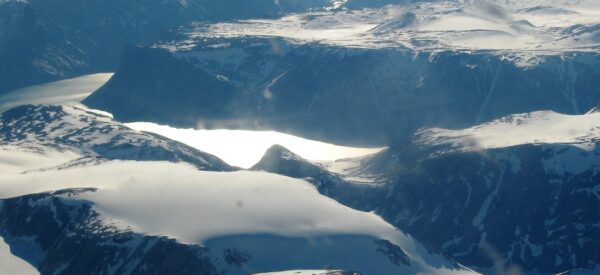SURVEYING CAPE HOOPER, BAFFIN ISLAND
The best laid plans...
Written By: Paul Burbidge | President and CEO Originally Written December 11, 2015
In 2006 through our partner company Inukshuk Geomatics Ltd. I got to make my first trip to Baffin Island. The purpose of the trip was a legal survey of the Cape Hooper Defense Early Warning (DEW) site. Cape Hooper lies approximately half way up Baffin Island on its east coast. I arrived in Iqaluit at the end of June and prepared to mobilize to site. We were grounded by a few days of weather in Iqaluit prior to our flight to site. Eventually we were able to fly and mobilized three Twin Otter loads of fuel, food, survey posts, an ATV and our four person crew to site. The flight in was spectacular and I was fortunate to get a few good photos.
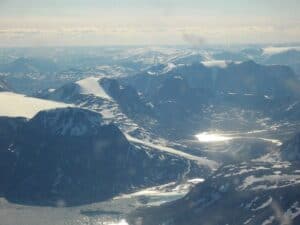
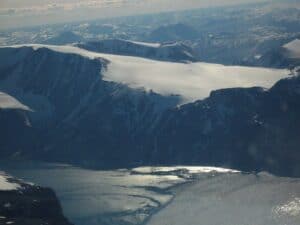
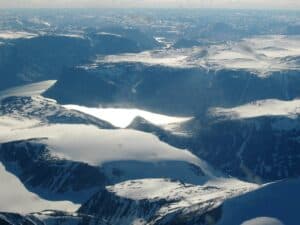
OH NO
Once we offloaded our 4000+ pound of gear we organized it and prepared to move it to our “camp”. The Cape Hooper airstrip is at sea level and we would be camping in the DEW line building that had modest amenities at the top of a small mountain. The generator building was accessed by a 4 kilometer long road with a steady 10 percent grade. Fortunately we’d brought an ATV and trailer to move our provisions. Unfortunately we hadn’t tested the ATV in any way as it was delivered and loaded on the plane immediately prior to departure. It’s appearance did not give me warm and fuzzy feelings regarding it’s mechanical state.
Once we offloaded the ATV we discovered it was barely working, we thought running it up and down the airstrip might help however it soon died at the far end of the strip. A few select words were said and we took a long hard look at the DEW site that suddenly appeared to be a lot further away. Little did we know an ATV wouldn’t have saved us.
We realized we’d have to carry our supplies to camp for the night and try to fix the ATV the next day. We barricaded anything we were concerned polar bears might disturb and packed up essentials. The hike to camp soon revealed significant challenges in the form of six foot deep snowdrifts that covered the road for hundreds of meters. We wouldn’t be able to use the ATV even if we fixed it. I started doing the math on what ABSOLUTELY had to get up the mountain and was depressed to realize it was well over 2000 pounds. We hadn’t packed light as we had anticipated easy access. Our provisions included several 5 gallon containers of water, cases of pop, canned food for 10 days or so, more than 1000 pounds of steel survey posts, survey equipment and car batteries to run the equipment. Carrying all of this up a four kilometer road that was deeply covered in snow in places wasn’t ideal.
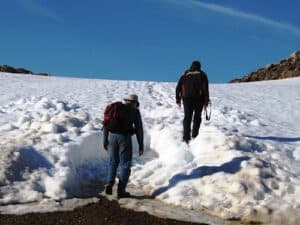
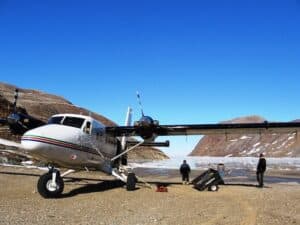
MOVING DAYS
I was extremely lucky to have a group that would even consider helping me move the gear up the mountain. Jacques was along as my assistant. Additionally our group had a representative for the DEW line monitoring and a wildlife monitor. The later two certainty weren’t compelled to help but pitched and earned their suppers.
We found a cart and a sled near camp and several hundred feet of rope. Using these we moved all of our necessary gear up the road and across the snow drifts. In a long hard day we moved everything. We stuffed pops into the snow drifts so that we’d get a refreshing drink as we struggled up the hill on each lap-those pops were really good. For the shorter drifts we’d pull the cart over the drift so that we didn’t have to unpack everything. The longer drifts required us to transfer the loads into the sled and pull it hand over hand across the drift.
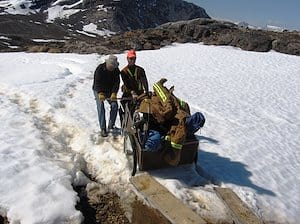
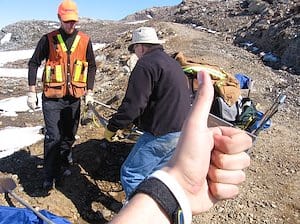
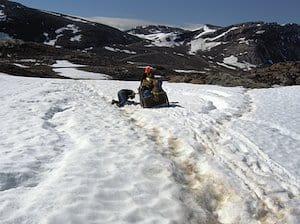
We arrived at the camp to find there were three cots for our four person crew but all slept well after a pretty tough day. We decided early on that we should finish up asap. Sleeping adjacent to 4 huge generators wasn’t super restful. Also, walking up and down the mountain was already getting old. Jacques was surviving on cans of fish as he was a vegetarian which he’d communicated but the information hadn’t been relayed to us. After two days of shuttling gear we were ready to start surveying.
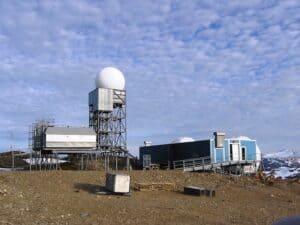
SURVEYING
By the time we actually started surveying we were several days behind. We’d been surveying features to facilitate design while shuttling our gear. Once I’d finalized the lots’ designs we started posting the lots. Driving the 0.8 meter rebar survey posts into the ground was tricky in a few locations as everything is rock in this area. Fortunately we had loose design criteria and we were able to place all the posts without a rock drill.
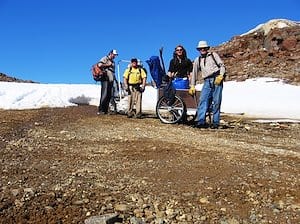
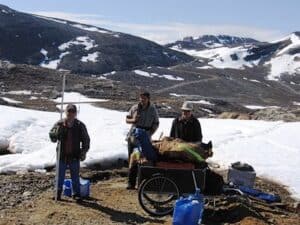
After working for about 12 hours each day placing posts I’d have a few hours of calculations to do in preparation for the next day’s work each night. I’d spend extra time rejigging the calculations such that we had to set (and thus move) as few posts as possible. After I finished each night I’d spend a bit of time outside checking out the cliffs as they changed color in the middle of the night.
We were able to finish up within our original time allowance and hightailed it south. After getting confirmation that our plane was on the way we got everything back down to the airstrip in only two trips.
I felt very fortunate for the crew I’d had along and for the chance to visit such a cool place. Also I’d learned to be picky about ANY piece of gear provided by third parties and ensure I’d seen it in action prior to mobilization.
